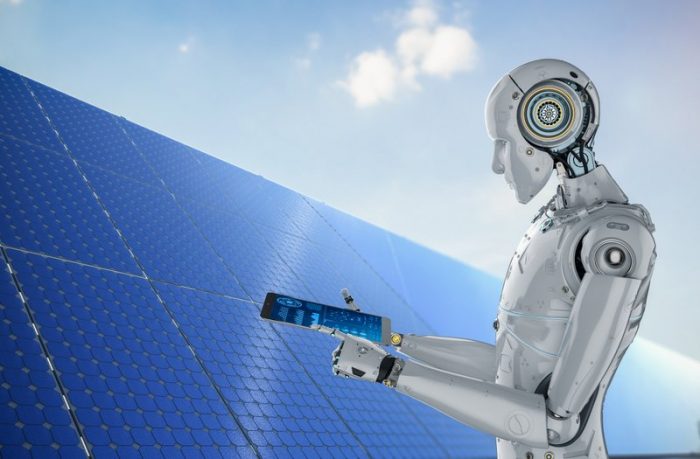
This perspective was sent in via Juan Muldoon, Energize Partner.
In the U.S., 100,000 new clean energy jobs have emerged in the past six months, yet low unemployment rates, labor costs, and job hopping are complicating renewable energy companies’ ability to hire, develop, and retain needed workers, such as production-line staff, electricians, mechanical engineers, and field technicians.
The future of the energy transition depends on the industry’s ability to address these labor challenges and empower the success of their frontline workers. And a simple step that many of these companies can take is prioritizing the digital enablement of their frontline workforce.
Market growth amid a skilled labor shortage
The clean energy sector is growing at an unprecedented rate. Global renewable electricity capacity is predicted to rise more than 80 percent from 2020 to 2026. By 2035, renewable energy will generate more electricity globally than any other production source, according to McKinsey analysis. Solar power, wind energy, and electric vehicle (EV) charging are among the winners.
Current labor supply projections predict there will be “material shortages in the workers needed to meet all of the newly created jobs from increasing clean energy to 50%-70% of generation by 2030.”
There are several ways companies can proactively address these concerns beyond a simple increase in hiring.
Digital enablement of the frontline workforce as a tool for success
New talent isn’t the only variable in the equation. Employers need to make sure they can train the workers they do have and put support mechanisms in place to better enable them to do their jobs. It’s important to remember that we are specifically dealing with a skilled labor shortage. If existing employees can’t do their jobs, training a new generation of teams will only prove even more difficult.
The market for emerging and skilled talent within the energy industry will likely remain strained for years to come. To combat labor challenges, renewable energy companies should consider adopting digital tools that help meet frontline employees where they are. Digital frontline success tools provide numerous benefits to help solar, wind, and EV companies be more competitive in the ongoing talent wars and more efficient in the field:
Enabling easier collaboration | Solar and wind energy field forces typically work in remote areas, where high-speed data connectivity is a challenge. As a result, they often work in small groups or in isolation. Frontline success systems, like Beekeeper for example, enable field workers to collaborate with their peers, easily access knowledge resources and forms, and share knowledge. Hybrid onsite-remote teams can work through installation, maintenance, and troubleshooting of equipment and other issues.
Keeping knowledge in house | The renewable energy workforce is maturing and retiring — 50 percent of the utilities workforce is slated to retire over the next decade — and taking their knowledge with them. Transferring knowledge among multi-generational workers, including business and technical processes and operational excellence and safety best practices, will help ensure renewable-energy firms’ business continuity.
Digitizing workflows | By digitizing paper-based processes, companies can reduce human errors, ensure consistency of work, and enhance worker productivity. Field staff can easily access work assignments and forms, capturing insights as they occur. Back in the office, there’s no need to type data or check records, as everything has been submitted digitally. Digital workflows not only make workers more efficient but create a more enjoyable work experience. Employees focus on adding value, rather than overcoming broken processes.
Enhancing a safety culture | Workers in the solar and wind energy industries can be exposed to safety risks, such as arc flashes, electrical shocks, falls, and thermal burns. EV charging stations use high-voltage electricity, increasing the risk of worker shocks, burns, and electrocution.
Frontline success applications provide on-demand training, standard operating procedures and checklists, to guide staff through step-by-step processes and mitigate risks. In addition, workers can use applications to reach out to peers if they encounter unknown challenges, to gain insight on how best to fix problems. All these improvements add up to a safer workplace where risk mitigation and worker protection are top priorities.
Retaining younger workers | Younger workers want to use technology, solve problems, and contribute to jobs with meaning and purpose. Currently, Millennial staff represent 32 percent of the renewable energy workforce and Gen Z just 1.5 percent, but those numbers are sure to grow over the coming decade as older workers retire.
One immediate challenge that companies need to solve, though, is attrition. Nearly two-thirds (64 percent) of non-retirement attrition occurs in the first five years of employment, and 60 percent of these departures occur with workers aged 23 to 37.
Retaining more of these workers is of utmost importance. In addition to simplifying on-the-job processes, frontline success systems can also help create corporate culture: providing easier access to company news and resources; connecting geographically dispersed teams; and enabling real-time, on-demand communication and collaboration. Field workers, who can easily feel isolated, become more connected to their company, mission, and colleagues.
Using digital tools that prioritize the needs of your frontline teams can help firms driving the energy transition hire, retain, and develop top workers; improve critical business processes; and operate more efficiently – all while moving the needle on climate action.
Juan Muldoon is an Energize Partner. He brings more than a decade of experience in finance and investing. As an Energize Partner, he is integral to all aspects of the Fund’s operations, including leading sourcing efforts, developing investment theses, driving diligence of potential investments, network management, and supporting and monitoring portfolio companies.
— Solar Builder magazine
Leave a Reply
You must be logged in to post a comment.